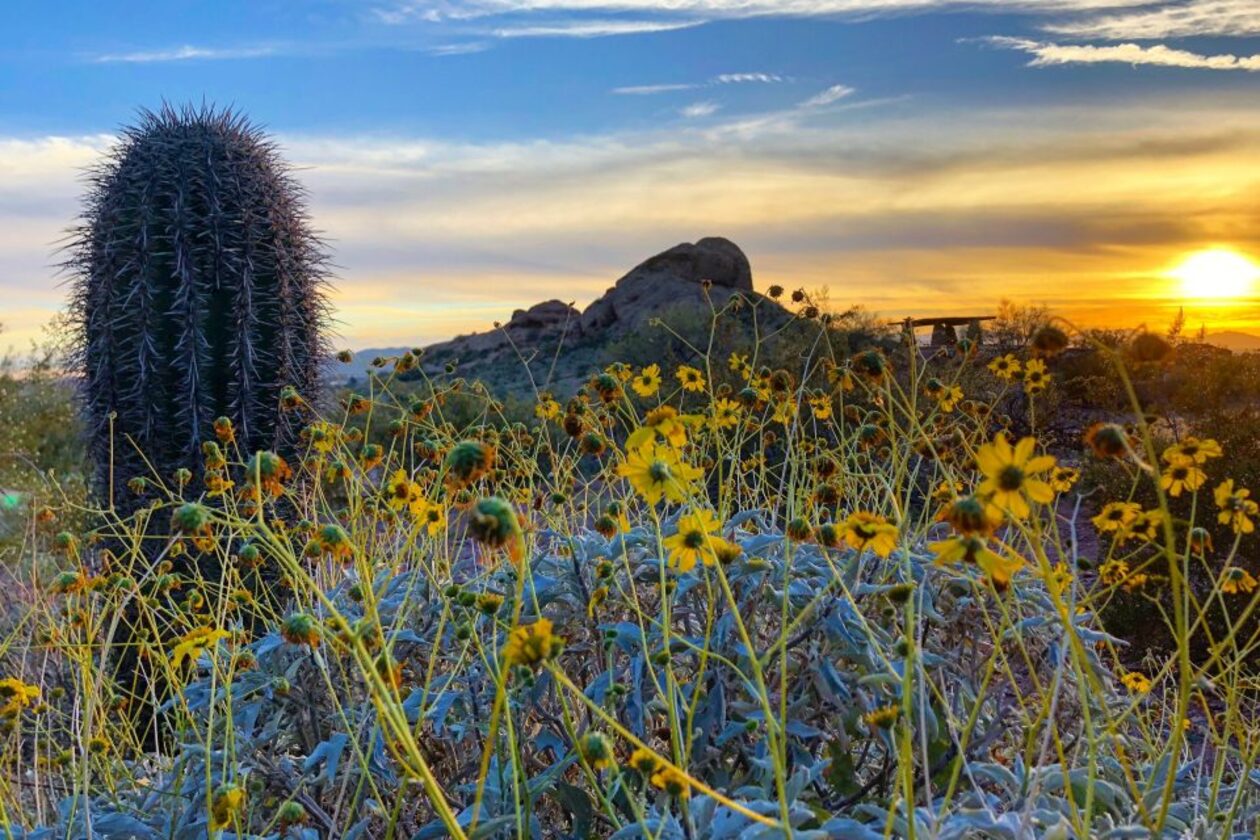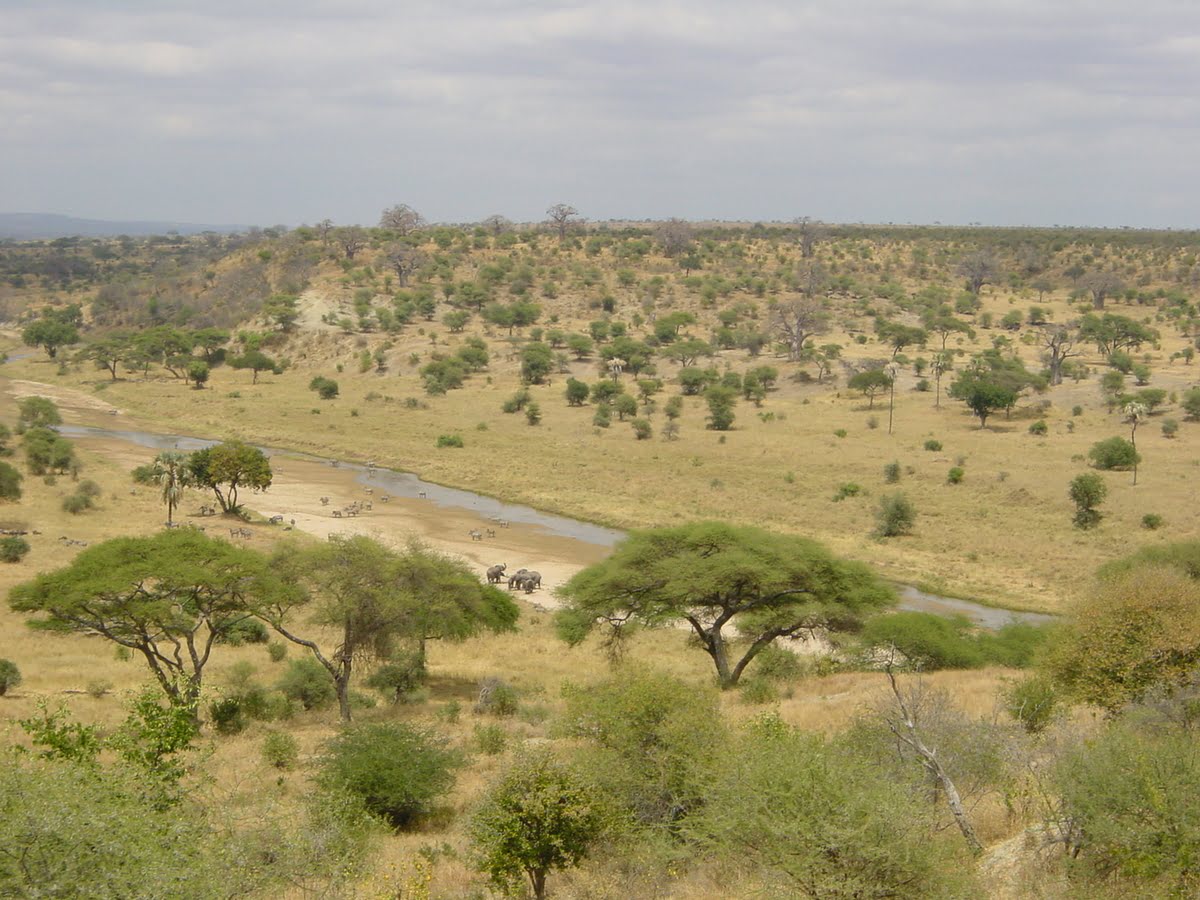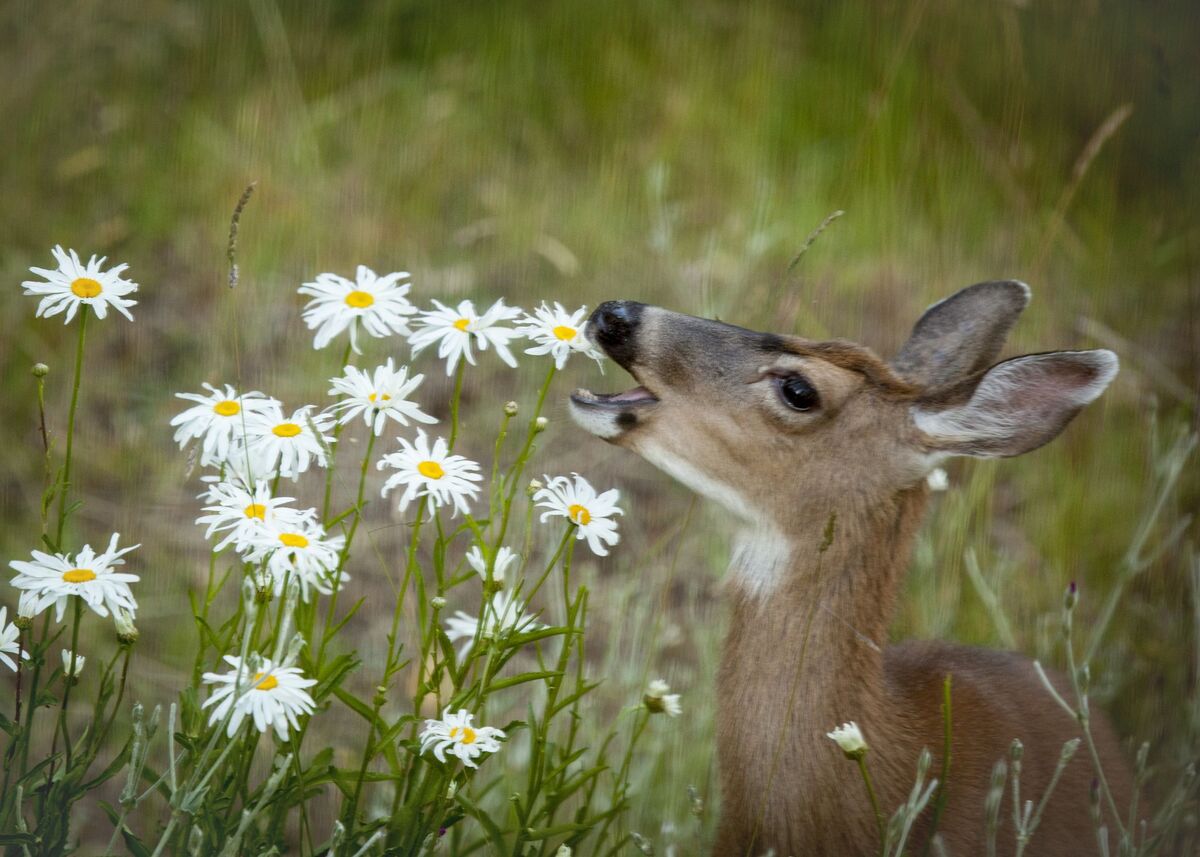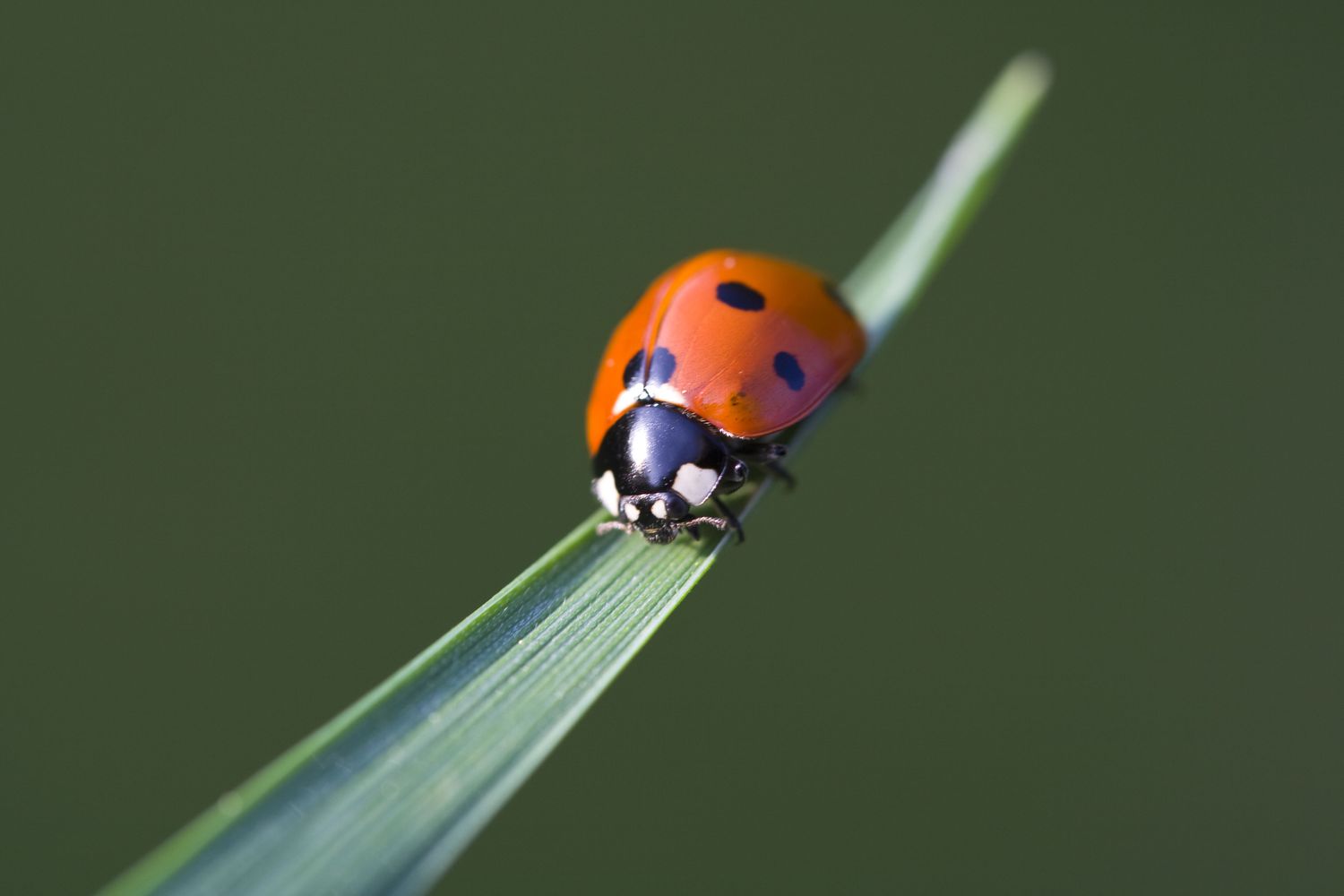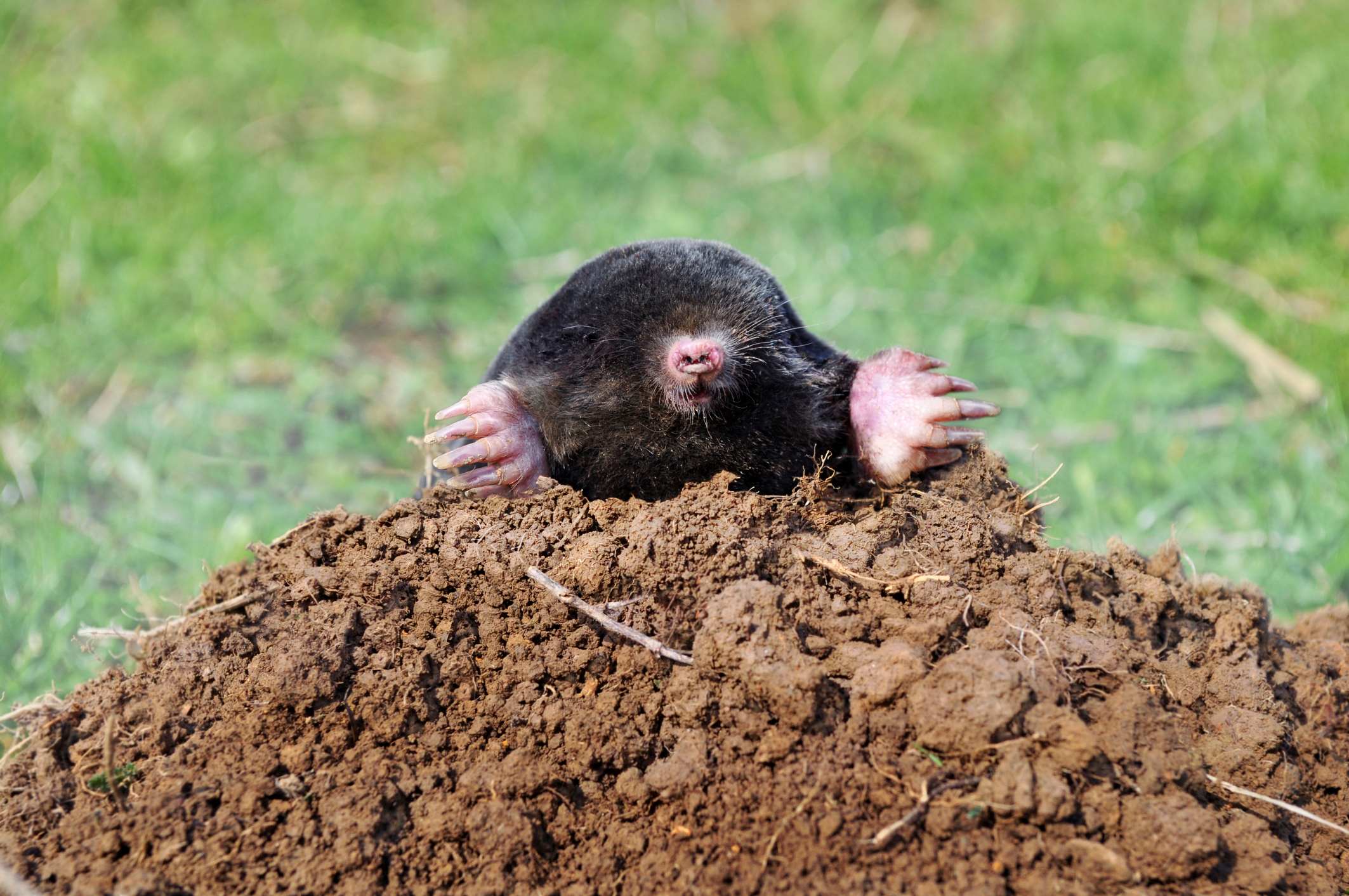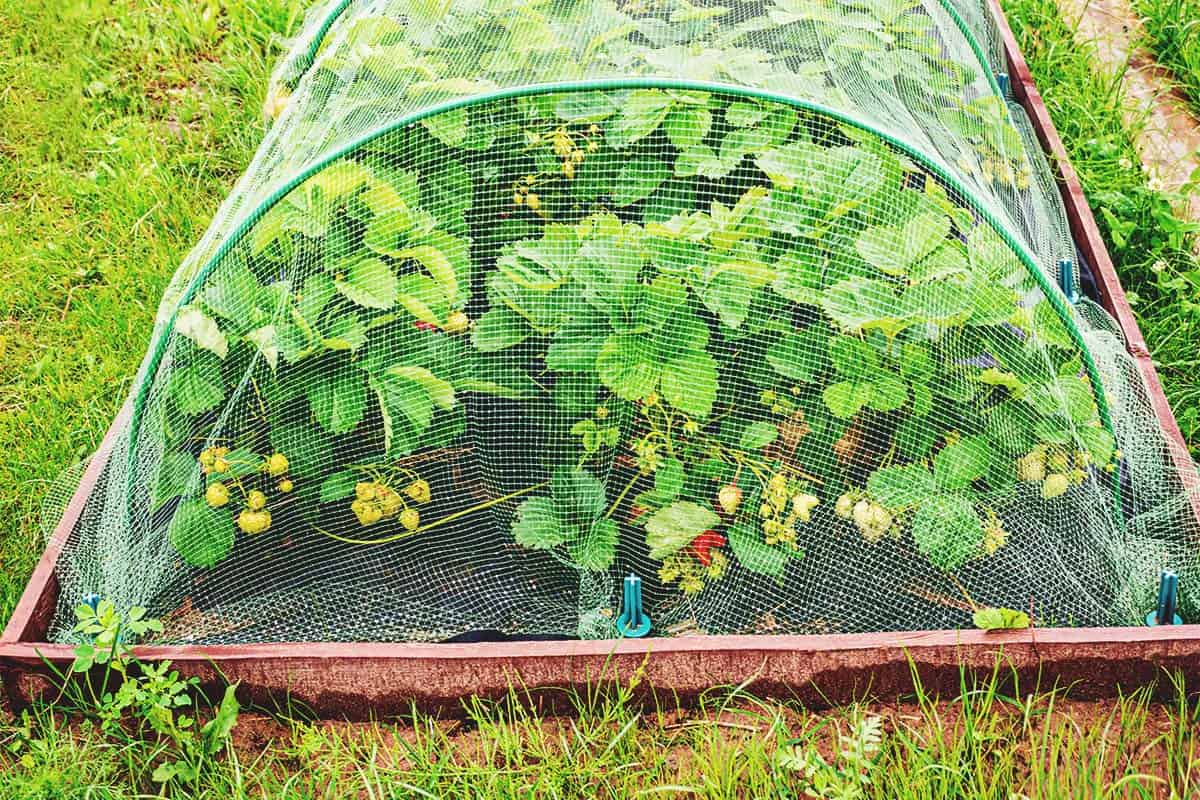Home>Gardening News and Trends>Latest News>What Animals Eat Shrubs In The Desert
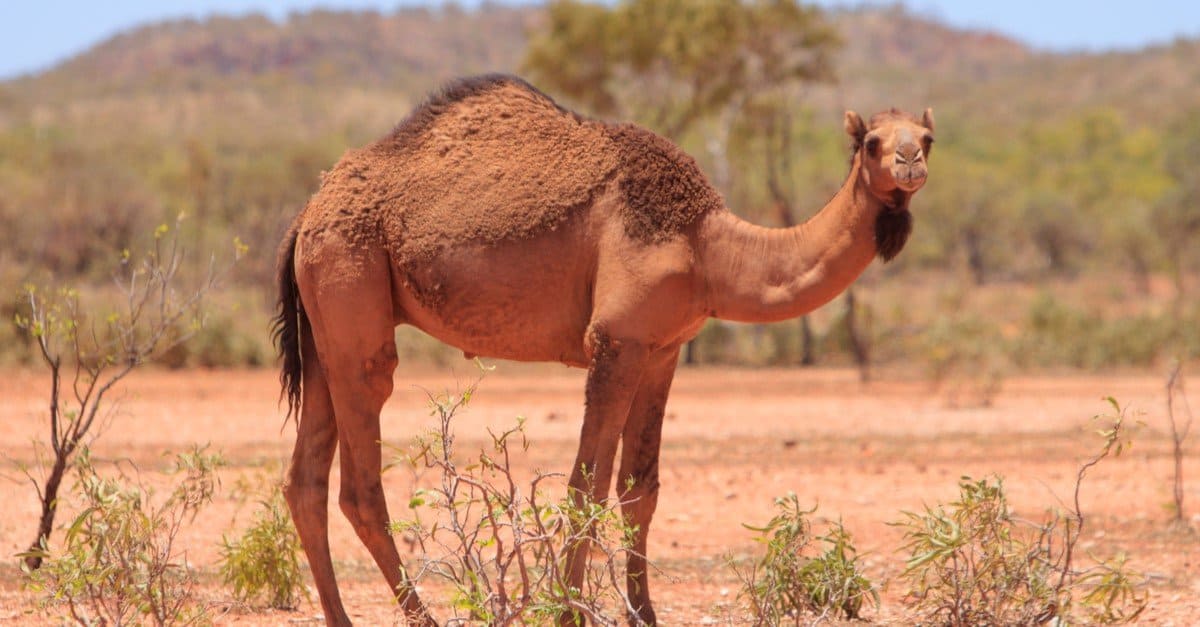

Latest News
What Animals Eat Shrubs In The Desert
Modified: January 22, 2024
Discover the latest news on what animals eat shrubs in the desert. Uncover fascinating insights into their diet and survival strategies in this informative article.
(Many of the links in this article redirect to a specific reviewed product. Your purchase of these products through affiliate links helps to generate commission for Chicagolandgardening.com, at no extra cost. Learn more)
Table of Contents
- Introduction
- Importance of Shrubs in the Desert Ecosystem
- Herbivorous Animals in the Desert
- Adaptations of Animals to Eat Shrubs
- Primary Consumers: Rabbits and Hares
- Desert Rodents: Kangaroo Rats and Pocket Mice
- Desert Tortoises: Efficient Shrub Eaters
- Browsing Animals: Deer and Antelope
- Insects: A Surprising Group of Shrub Consumers
- Conclusion
Introduction
Shrubs play a crucial role in the delicate desert ecosystem, providing food and shelter for a variety of animals. In the harsh, arid environment of the desert, these resilient plants are able to survive and thrive, making them a vital resource for herbivorous animals. From mammals to reptiles to insects, a diverse range of creatures rely on shrubs as a source of sustenance.
Desert shrubs have evolved unique adaptations to survive in extreme conditions, such as deep root systems to access water and waxy coatings to minimize water loss. These adaptations also make them a valuable food source for animals, as the shrubs tend to be rich in nutrients and moisture, essential for survival in the desert.
In this article, we will explore the fascinating world of desert herbivores and their relationship with shrubs. We will delve into the various adaptations these animals possess to consume and digest shrubs effectively. From primary consumers like rabbits and hares to browsing animals like deer and antelope, we will uncover the diverse ways in which animals utilize shrubs as a vital part of their diet.
Additionally, we will shed light on often overlooked shrub consumers: insects. While they may not be the first to come to mind, insects have also found a way to make the most of these desert plants, showcasing their remarkable adaptability and resourcefulness.
Join us on this journey as we explore the unique and intricate relationships between animals and shrubs in the unforgiving desert landscapes. Through their innovative strategies and adaptations, these animals have found a way to thrive in an environment that seems devoid of resources. Let’s discover the fascinating world of desert herbivores and their reliance on shrubs for survival.
Importance of Shrubs in the Desert Ecosystem
Shrubs play a vital role in the fragile desert ecosystem, providing numerous benefits that contribute to the overall health and balance of the environment. Despite the scarcity of water and harsh conditions, these resilient plants have adapted to survive and thrive, making them an essential component of desert life.
One of the primary roles of shrubs is to provide a source of sustenance for herbivorous animals in the desert. These plants are packed with nutrients, making them a valuable food source for a variety of creatures. Rabbits, hares, and other small mammals rely on shrubs as a staple in their diet, feeding on the tender leaves and shoots. The shrubs not only provide these animals with nourishment but also serve as a source of water, helping them survive the dry desert conditions.
Another crucial aspect of shrubs’ importance lies in their ability to provide shelter and protection for a multitude of desert organisms. The dense foliage and thorny branches create a safe haven for small mammals, reptiles, and birds. They offer protection from predators, extreme temperatures, and harsh winds, allowing these animals to seek refuge and establish territories within the intricate shrub network.
Furthermore, shrubs contribute to the prevention of erosion in the desert. Their extensive root systems anchor the soil, preventing it from being eroded by strong winds and flash floods. This helps to maintain the stability of the desert landscape while also preserving the delicate balance of the ecosystem.
Shrubs also contribute to the cycling of nutrients in the desert. As plants photosynthesize, they absorb carbon dioxide from the air and release oxygen, playing a role in reducing atmospheric greenhouse gases. Additionally, when these shrubs shed leaves and branches, they decompose and enrich the soil, providing essential nutrients for other plant species to grow.
Furthermore, shrubs provide valuable habitat and resources for a range of insect species. From pollinators like bees and butterflies to herbivorous insects that feed on the foliage, shrubs offer a diverse array of food sources and nesting sites. These insects, in turn, are an important part of the desert food chain, providing sustenance for other animals higher up the trophic levels.
Overall, the significance of shrubs in the desert ecosystem cannot be overstated. They provide food, water, shelter, and protection for a wide variety of desert dwellers. Additionally, they contribute to the prevention of erosion, nutrient cycling, and even play a role in mitigating climate change. Shrubs are truly the backbone of the delicate desert ecosystem, supporting a thriving community of life in an otherwise inhospitable environment.
Herbivorous Animals in the Desert
The desert is home to a surprising variety of herbivorous animals that have adapted to feed on the sparse vegetation found in these arid landscapes. These animals play a crucial role in the ecosystem, consuming and dispersing seeds, shaping the plant community, and providing a food source for predators.
One of the most common herbivores in the desert is the rabbit. Rabbits are well-adapted to feed on desert shrubs, using their sharp incisors to gnaw through tough vegetation. They consume a variety of shrubs, grasses, and cacti, extracting the necessary nutrients and water to survive in the harsh desert environment.
Another herbivore found in the desert is the hare. Hares have similar feeding habits to rabbits and rely on shrubs and other plants for sustenance. They have powerful hind legs, allowing them to leap and navigate through the desert terrain in search of food.
In addition to mammals, several reptiles also have herbivorous diets in the desert. Desert tortoises, for example, are well-known for their ability to consume a wide range of desert shrubs, including species with thorns and toxic compounds. Their specialized digestive systems enable them to break down and process these plant materials efficiently.
Desert rodents, such as kangaroo rats and pocket mice, are fascinating creatures that have adapted to survive on the limited resources available in the desert. They feed on seeds, fruits, and small plant parts, including the shrubs that dot the landscape. These rodents have evolved efficient kidneys to conserve water and can extract moisture from their food, allowing them to survive in areas with minimal water sources.
Browsing animals, such as deer and antelope, are also present in some desert regions. While they may not solely rely on shrubs for their diet, these animals do consume them as part of their browsing behavior. They make use of their height advantage to feed on taller shrubs and branches, providing yet another way for shrubs to serve as a food source for desert herbivores.
Interestingly, even insects have adapted to feed on desert shrubs. While many people associate insects with flowering plants, some species have developed a close association with shrubs, using both the foliage and sap as their food source. Insects like grasshoppers, beetles, and caterpillars feed on shrub leaves, stem tissues, or sap, taking advantage of the nutrients and moisture contained within.
These herbivorous animals in the desert have evolved various adaptations to extract the maximum nutrition from the limited and often harsh resources available. From specialized digestive systems to efficient water conservation mechanisms, these creatures have found innovative ways to survive and thrive in the extreme conditions of the desert.
Adaptations of Animals to Eat Shrubs
Animals that have evolved to eat shrubs in the desert have developed remarkable adaptations to overcome the challenges posed by these tough and fibrous plants. These adaptations allow them to efficiently extract nutrition and hydration from shrubs, enabling their survival in the arid desert environment.
One crucial adaptation is the dental structure of herbivorous mammals. Animals like rabbits and hares possess long incisors that continuously grow throughout their lives. These sharp front teeth enable them to effectively gnaw through tough shrub stems and branches, accessing the valuable nutrients contained within. Additionally, their molars are ridged and suited for grinding down the fibrous plant matter for better digestion.
Another important adaptation is the digestive system of herbivorous animals. Many desert-dwelling herbivores have elongated and multi-chambered stomachs, allowing for the fermentation and breakdown of plant materials. Bacteria found in their digestive tracts aid in the digestion of cellulose and other complex carbohydrates, extracting the maximum amount of nutrients from the shrubs they consume.
Desert tortoises have a specialized adaptation in their jaw structure. Their powerful beaks allow them to nip off tough shrub leaves and stems, while their rough, grinding plates within their mouths help break down the plant material before digestion. Additionally, these reptiles can store large amounts of water within their bodies, utilizing it as a reservoir during the dry periods when shrubs may lack sufficient moisture.
Many desert rodents, like kangaroo rats and pocket mice, have adapted to obtain water from their diet. They are efficient at extracting moisture from the seeds and plant parts they consume, conserving water in their bodies. These rodents also have the ability to metabolize dry food effectively, allowing them to survive on the minimal water resources available in the desert.
Browsing animals, such as deer and antelope, have evolved long necks and specialized jaws that enable them to reach and feed on shrubs that are higher from the ground. With their height advantage, they are able to browse on taller shrubs, gaining access to their leaves and branches for nourishment.
Even insects have developed adaptations to consume shrubs. Some insects, like caterpillars, have specialized mouthparts designed for chewing through tough plant tissues. Others, like certain beetles and grasshoppers, have developed digestive enzymes that aid in breaking down the complex compounds found in shrub foliage. These adaptations allow them to extract the necessary nutrients and energy from the shrubs they feed on.
Overall, the varied adaptations of animals that eat shrubs in the desert illustrate the incredible diversity of strategies that have emerged to utilize this important food source. From specialized teeth and digestive systems to water conservation mechanisms and unique feeding behaviors, these adaptations enable these animals to thrive and survive in the challenging conditions of the desert.
Primary Consumers: Rabbits and Hares
Rabbits and hares are considered primary consumers in the desert ecosystem, as they directly feed on shrubs and other vegetation as their primary food source. These small mammals have adapted numerous characteristics that allow them to efficiently obtain nutrients and water from the limited resources available in the desert.
Rabbits and hares are equipped with specialized teeth to graze on shrubs. Their sharp incisors continuously grow throughout their lives, enabling them to gnaw through the tough stems and branches of desert shrubs. This adaptation allows them to access the valuable nutrients contained within the vegetation. Additionally, their molars are ridged and suited for grinding down the fibrous plant matter, aiding in the digestion process.
One of the remarkable adaptations of rabbits and hares is their ability to extract water from their food. In the desert, water sources can be scarce and limited, making it essential for these animals to find alternative ways to stay hydrated. They have developed efficient digestive systems that enable them to absorb and utilize moisture from the vegetation they consume. This adaptation allows them to survive in arid conditions where water availability is limited.
Rabbits and hares have also evolved a heightened sense of smell and hearing, which aids in their survival and ability to find shrubs to eat. This acute sensory perception allows them to detect potential dangers, such as predators or approaching humans, and quickly seek shelter among the dense shrubbery.
These small mammals are also capable of reproducing rapidly, which is advantageous in the unpredictable and challenging environment of the desert. Their ability to breed multiple times throughout the year helps compensate for the high mortality rates and ensures the population’s survival, despite the harsh conditions they face.
Furthermore, rabbits and hares play a significant role in seed dispersal. As they consume shrubs and other vegetation, they ingest seeds that pass through their digestive systems relatively intact. Subsequently, the seeds are deposited onto the ground in their feces, aiding in the dispersion and germination of various plant species. This process contributes to the biodiversity and regrowth of vegetation in the desert.
Rabbits and hares, as primary consumers, are an integral part of the desert ecosystem. Their ability to digest shrubs, extract water from their diet, and facilitate seed dispersal showcases their important ecological role. By consuming these hardy plants, they contribute to shaping the plant communities, provide food for predators, and contribute to the overall balance and sustainability of the desert ecosystem.
Desert Rodents: Kangaroo Rats and Pocket Mice
Desert rodents, such as kangaroo rats and pocket mice, are fascinating creatures that have adapted to survive in the arid desert by deriving their sustenance from a combination of seeds, fruits, and plant parts, including shrubs. These rodents have developed unique characteristics and behaviors that allow them to efficiently extract nutrition from the limited resources available in their harsh desert habitats.
Kangaroo rats, known for their powerful hind legs that enable them to move in a hopping motion, have evolved specialized adaptations to survive in the desert landscape. One of their most striking features is their ability to survive without drinking water. Instead, they obtain the moisture they need from the seeds they consume. Kangaroo rats have highly efficient kidneys that allow them to conserve water and produce concentrated urine, helping them thrive in water-scarce environments.
In addition to their water conservation mechanisms, kangaroo rats have the ability to metabolize dry food effectively. They can extract sufficient water from the seeds they consume, allowing them to survive in areas with minimal water availability. These rodents also have fur-lined cheek pouches that they use to store seeds, allowing them to transport food to their burrows for consumption later.
Pocket mice, another group of desert rodents, have also adapted to the challenges of the desert environment. They have elongated cheek pouches similar to kangaroo rats, used for carrying seeds back to their burrows. These seeds serve as their primary source of nourishment in the arid desert.
A notable adaptation of pocket mice is their ability to enter a state of torpor during times of resource scarcity. Torpor is a period of decreased metabolic activity that helps conserve energy when food and water are scarce. Pocket mice can enter this state to minimize their energy expenditure, allowing them to survive for extended periods without access to food and water.
Both kangaroo rats and pocket mice possess well-developed hearing and vision, which enables them to detect predators and quickly escape to the safety of their burrows. They are primarily nocturnal, avoiding the extreme heat and aridity of the desert during the day.
Moreover, these desert rodents play a vital role in seed dispersal. As they forage for food, they inadvertently carry seeds in their cheek pouches, subsequently depositing them in different locations as they move about their habitats. This dispersal mechanism helps promote plant diversity and distribution in the desert.
These remarkable adaptations of kangaroo rats and pocket mice allow these desert rodents to thrive in challenging desert environments. Their efficient water conservation, ability to metabolize dry food effectively, and unique behaviors protect them from the harsh conditions and scarcity of resources. These rodents contribute to the ecological balance of the desert by consuming shrubs and other plant materials and assisting in the dispersal of seeds, ultimately supporting the diversity and continuation of the desert ecosystem.
Desert Tortoises: Efficient Shrub Eaters
Desert tortoises are iconic inhabitants of arid landscapes, known for their ability to eat a wide variety of desert shrubs. These reptiles have developed several adaptations that allow them to efficiently consume and digest the tough plant materials found in their desert habitats.
One remarkable adaptation of desert tortoises is their specialized jaw structure. These reptiles have powerful jaws with beak-like mouths, which allow them to nip off tough shrub leaves and stems. Their mouths contain rough, grinding plates that help break down the plant material into smaller, more manageable pieces before digestion.
Desert tortoises also possess a highly efficient digestive system. Their long intestines and fermentation chambers enable them to break down and process the fibrous plant matter they consume. Bacteria present in their digestive tracts aid in the breakdown of cellulose and other complex carbohydrates, allowing the tortoises to derive nutrients from the tough shrub foliage.
Furthermore, desert tortoises have evolved the ability to store large amounts of water within their bodies. During periods of limited water availability, they can rely on the moisture stored in their urinary bladder. This adaptation ensures their survival in arid environments where water sources may be scarce or sporadic.
Another factor contributing to desert tortoises’ efficiency as shrub eaters is their feeding behavior. They tend to graze on a wide variety of desert shrubs, sampling from different species throughout their habitat. This behavior not only provides them with a diverse range of nutrients but also prevents overgrazing of any particular shrub species.
Desert tortoises have also developed the ability to tolerate and detoxify potentially toxic compounds found in some desert shrubs. Certain plant species in the desert produce chemicals as a defense mechanism, but the tortoises have evolved strategies to process and neutralize these substances. This adaptation allows them to safely consume shrubs that may be otherwise harmful to other herbivores.
Additionally, desert tortoises play a crucial role in seed dispersal. As they consume shrubs and other vegetation, they inadvertently ingest seeds, which then pass through their digestive system and are deposited in their feces. This process aids in the dispersal and germination of various plant species, contributing to plant diversity and the regeneration of vegetation in the desert.
Overall, desert tortoises exemplify efficient shrub eaters in the desert ecosystem. Their specialized jaws and digestive systems allow them to process tough plant materials effectively, while their ability to store water and tolerate certain toxins enables them to exploit shrubs as a valuable food source. These reptiles, with their role in seed dispersal and their impact on shrub consumption, play a vital role in maintaining the delicate balance of the desert ecosystem.
Browsing Animals: Deer and Antelope
In some desert regions, browsing animals such as deer and antelope can be found, utilizing shrubs as part of their diet. While these animals may not exclusively rely on shrubs for sustenance, they play a significant role in browsing and shaping the plant communities within the desert ecosystem.
Deer and antelope are well-known for their ability to consume plant foliage, often including the leaves and branches of shrubs. Their browsing behavior involves selectively feeding on the tender shoots and leaves of various plant species, including shrubs, while avoiding the tougher and less nutritious plant parts.
These browsing animals have several adaptations that enable them to efficiently feed on shrubs. One such adaptation is their specialized dentition. They have incisors at the front of their mouths for ripping off plant material and molars at the back for grinding down the vegetation into smaller particles, aiding in digestion.
Additionally, deer and antelope possess elongated necks, allowing them to reach higher parts of shrubs and browse on foliage that may be out of reach for other herbivores. This height advantage broadens their food options and enables them to access a greater variety of plants, including shrubs.
These animals also have well-developed digestive systems. Their multi-chambered stomachs assist in the breakdown and fermentation of plant materials, enabling them to extract the necessary nutrients from the shrubs they consume. They have bacteria within their digestive tracts that assist in the digestion of cellulose, a complex carbohydrate found in plant cell walls.
Browsing animals, such as deer and antelope, play a role in shaping the plant communities in the desert. Their feeding behavior can influence the structure and distribution of shrubs and other vegetation. By selectively browsing on certain plants, they can affect the growth and regrowth of different species, contributing to the overall diversity and balance of the desert ecosystem.
Furthermore, the browsing activities of these animals create open areas within the shrubbery, providing opportunities for other plant species to establish and thrive. The gaps created by their browsing also allow sunlight to reach the desert floor, promoting the growth of grasses and herbaceous plants that provide food and habitat for other desert inhabitants.
Although deer and antelope may not solely rely on shrubs for their diet, their browsing behaviors have a significant impact on the dynamics of plant communities within the desert ecosystem. By feeding on shrubs, they contribute to the diversity and structure of vegetation, playing a crucial role in the delicate balance of the desert environment.
Insects: A Surprising Group of Shrub Consumers
When we think of shrub consumers, insects may not be the first creatures that come to mind. However, insects are a diverse and remarkable group of animals that have adapted to make the most of the available resources in the desert, including shrubs. These tiny but mighty creatures have found innovative ways to utilize shrubs as a source of food and shelter in the harsh desert environment.
Many insects have evolved specialized mouthparts that allow them to access the nutritious parts of shrubs. For instance, beetles possess strong mandibles that they use to chew through woody parts of shrubs, while caterpillars have powerful jaws that can break down tough leaves and stems. These adaptations enable these insects to access the nutrient-rich tissues within the shrubs.
In addition to their chewing adaptations, some insects have remarkable digestive systems that aid in processing plant materials. Certain insects have specialized enzymes in their guts that can break down complex compounds found in shrubs, such as cellulose and lignin. This allows them to efficiently extract nutrients from the otherwise indigestible plant matter.
Insects have also found clever ways to access moisture from shrubs in the desert. Some species are known to extract water from the sap of shrubs, while others rely on ingesting succulent plant parts or utilizing the moisture content in the shrub foliage itself. This ability to extract water from the shrubs enables them to survive in the arid conditions of the desert.
Shrubs also provide insects with an important source of shelter and protection. The dense foliage and thorny branches of shrubs offer refuge from predators, extreme temperatures, and strong winds. Some insects even build their nests or lay their eggs within the protective environment of shrubs, ensuring the survival of the next generation.
Insects play another crucial role as pollinators of shrubs. While feeding on the nectar and pollen of shrub flowers, they inadvertently transfer pollen from one flower to another, promoting the reproduction and genetic diversity of shrub populations. This process is essential for the successful reproduction and survival of shrub species in the desert ecosystem.
Furthermore, insects are an integral part of the desert food web. They serve as an important source of food for other animals, higher up in the trophic levels. Insect-eating predators, such as birds, reptiles, and mammals, rely on the abundance of insects that feed on shrubs. Thus, the presence of shrubs supports not only insect populations but also the larger animal community in the desert.
While often overlooked, insects are surprising and fascinating consumers of shrubs in the desert. With their unique adaptations for feeding, digestion, and water utilization, they have found ingenious ways to thrive on the valuable resources provided by desert shrubs. From their role in pollination to their contribution to the desert food web, insects play an integral part in maintaining the delicate balance of the desert ecosystem.
Conclusion
The interactions between animals and shrubs in the desert ecosystem are both intriguing and vital for the survival of various species. Shrubs serve as a crucial source of food and shelter for a diverse range of herbivores, including rabbits, hares, desert rodents, browsing animals like deer and antelope, as well as unexpected consumers like insects. These animals have evolved remarkable adaptations to overcome the challenges posed by shrubs and extract nutrition from these tough and fibrous plants.
The importance of shrubs in the desert cannot be overstated. They provide vital nutrients, water, and protection, allowing herbivorous animals to thrive in the harsh desert environment. Shrubs also contribute to nutrient cycling, erosion prevention, and habitat creation in the desert ecosystem, ensuring the balance and sustainability of these arid landscapes.
Primary consumers, such as rabbits and hares, have developed specialized teeth for effectively grazing on shrubs and extracting water from their diet. Desert rodents, like kangaroo rats and pocket mice, have evolved mechanisms for water conservation and efficient digestion of dry plant material. Desert tortoises showcase adaptations in their jaw structure and digestive system to efficiently consume shrubs while storing water within their bodies. Browsing animals like deer and antelope utilize their height advantage for accessing shrubs, contributing to plant diversity and the shaping of plant communities.
In addition to these larger animals, insects play a surprising role as shrub consumers in the desert. With their specialized mouthparts, efficient digestive systems, and resourcefulness in accessing water and shelter, insects have found innovative ways to make the most of the shrubs. They contribute to pollination, seed dispersal, and serve as a vital food source for other animals in the desert ecosystem.
Together, these diverse groups of animals highlight the intricate interdependence between shrubs and the desert ecosystem. By consuming shrubs, these animals shape the plant communities, distribute seeds, provide food for predators, and contribute to the overall balance and sustainability of the desert environment.
The study of desert shrub consumers not only deepens our understanding of the adaptations and strategies of desert-dwelling animals but also emphasizes the importance of preserving and protecting these fragile ecosystems. By recognizing the significant role that shrubs play in supporting the diverse array of desert life, we can make informed conservation efforts to secure the future of these valuable habitats.
